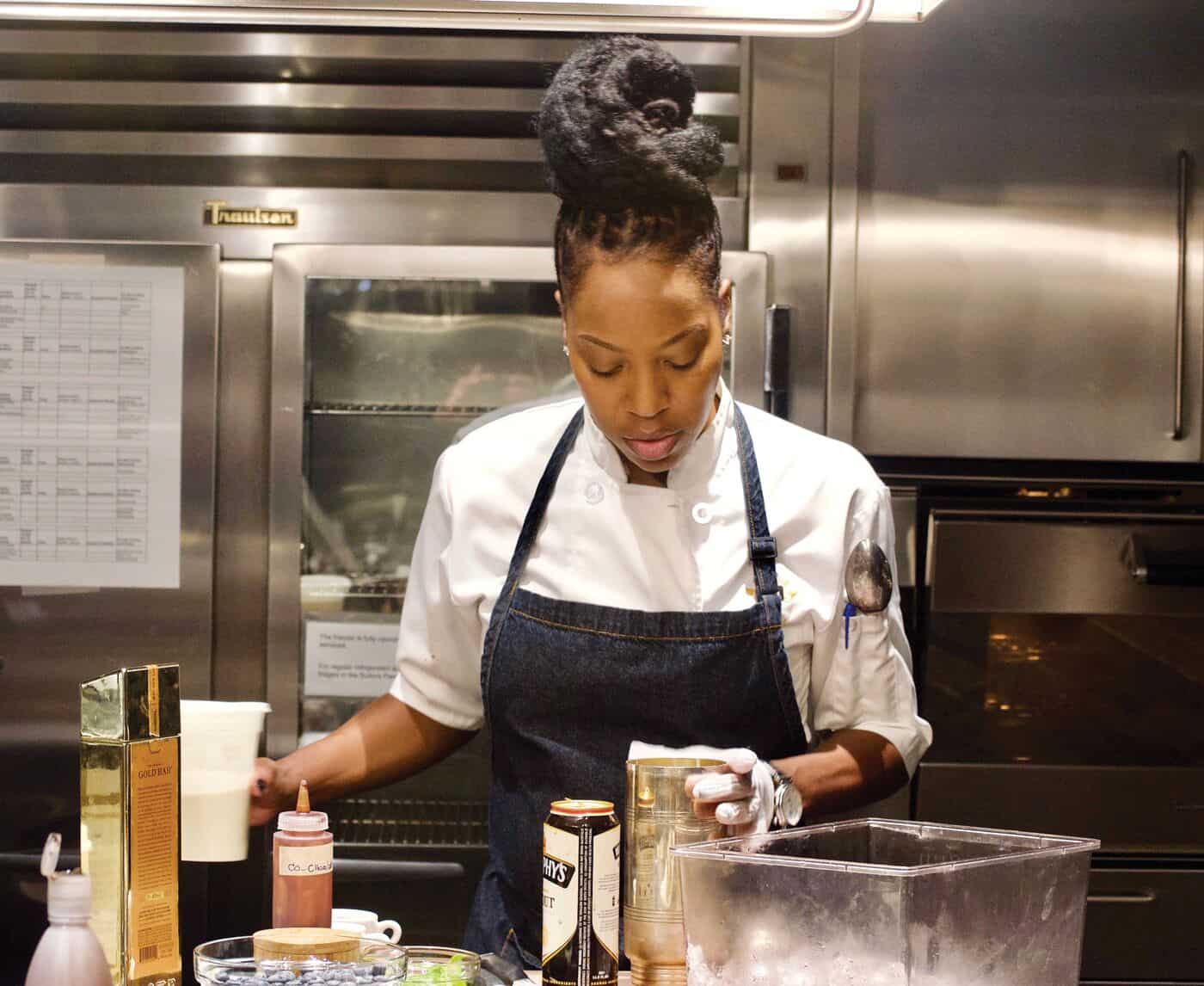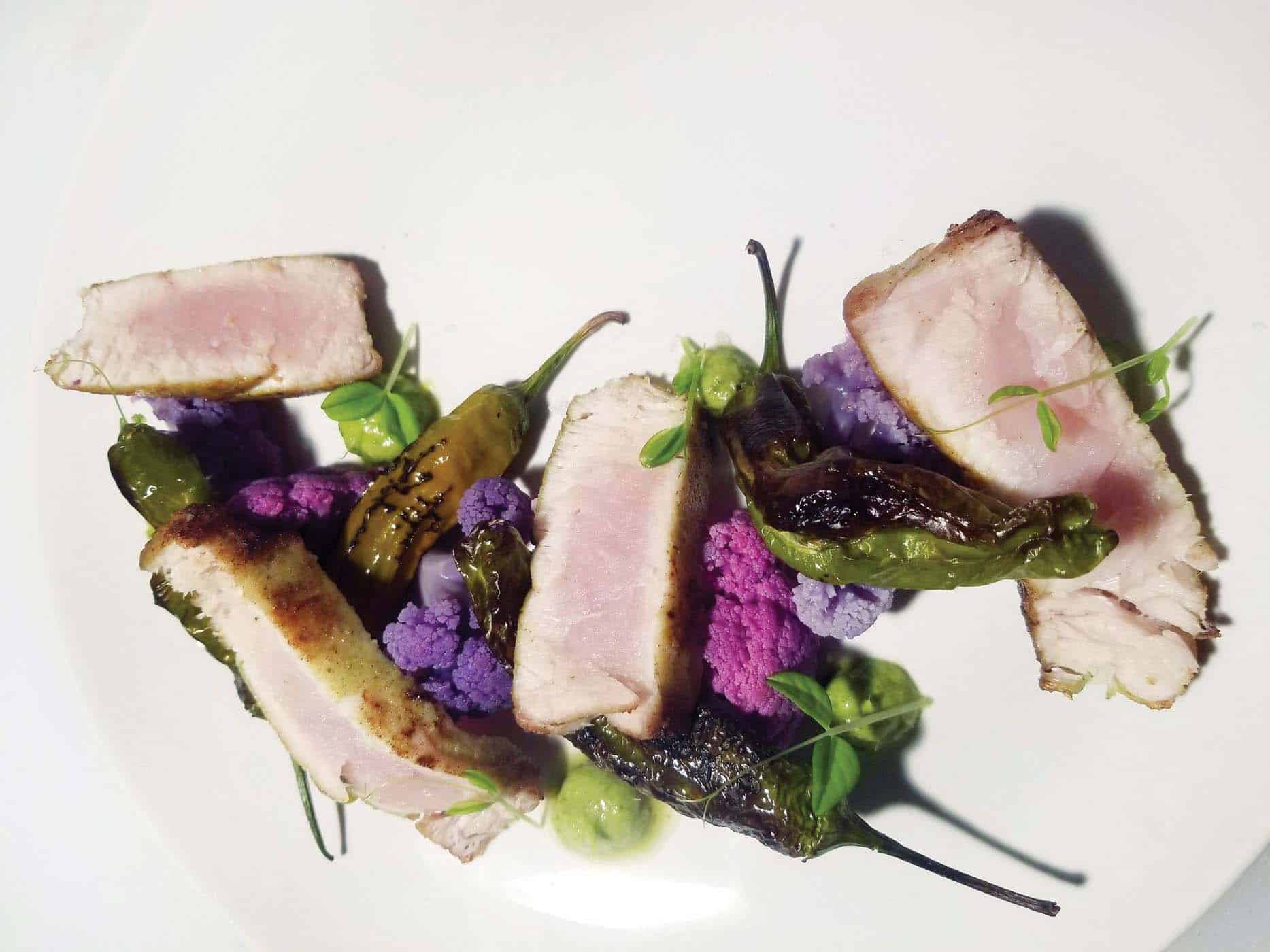It’s been a long, exhausting day at the office. You’re not in the mood to cook, so you decide to grab a bite at a local eatery. Is your first question “Do I want infused or non-infused?” Probably not. But soon it could be. A lively cannabis cuisine scene is popping up in mature markets out west, where enthusiastic diners can reserve a seat at a private gathering and dose up to their heart’s delight, enjoying multi-course dinners that often feature flower pairings and inspired adventures in weed-infused gastronomy. While there has been some significant progress over the past five years and some groundbreaking developments, legislators and regulators probably won’t become comfortable with the idea of freshly made, weed-infused foods at the corner diner for quite some time. But don’t tell that to The Mint Dispensary owner and Chief Operating Officer Raul Molina, who recently served a cheeseburger loaded with 300 milligrams of THC to a customer in Tempe, Arizona, and claims to have established the country’s first—and so far only—full-service cannabis kitchen.
Growing hunger for edibles, infused cuisine
Although edibles compose one of the smallest market segments in most states, with around 10 percent to 15 percent of the total pie, the segment is one of the fastest-growing, according to a recent Arcview report. In 2017, consumers in the United States and Canada spent about $1 billion on infused food and beverages, or about 11 percent of the $9 billion in total cannabis spending. By 2022, the edibles category is expected to reach $4 billion, making it an attractive subsector of the industry for both operators and investors.
Chefs around the country are trying to grab a bigger piece of action by spreading the gospel at infused brunches, dinners, workshops, and any other event that might entice intrepid diners to the table. However, as much as this niche industry has grown in the past few years, one thing has remained constant: Public eateries serving THC-infused foods remain verboten. The tide slowly is shifting, though, as city and state officials begin discussing how to regulate and license new ventures.

“When I started in this industry and was looking for an attorney, there was only one that wanted to help us get a license and was supportive in moving the agenda,” said chef Andrea Drummer, a graduate of Le Cordon Bleu and co-owner of Elevation VIP Co-op, a Los Angeles–based company that caters high-end, intimate dinner parties. “Not many people thought this would be a thing, so we’ve come quite a long way and I’m proud to be a part of that.
When the first cannabis gastronomes began cropping up on the West Coast about ten years ago, the dining scene was very much an underground phenomenon with word-of-mouth promotion, hush-hush invites, and secret locations that hosted small groups of people. Now, Michelin-starred chefs are getting into the game, and numerous established groups host regularly scheduled private events. At the same time, restaurants and cafes are beginning to infuse everything from lattes to muffins with CBD, despite warnings from the U.S. Food and Drug Administration about that unregulated side of the industry.
But…oysters?
One of the first canna cuisine sightings in the San Francisco Bay Area was the Cannaisseur Series in 2015, when chef Coreen Carroll paired flower with food in an underground popup fashion for dinners, brunches, and other private events. Instead of offering full-on infusions, Carroll eased newbies into the edibles scene by presenting low-dose infused hors d’oeuvres followed by a meal complimented by select flower. She partnered with brand sponsors, allowing guests to mingle with local artisan cannabis producers and leave with an herbalicious goodie bag.
In 2018, after three years of working in the traditional cooking scene and creating cannabis events on the side, Carroll was able to make the latter her full-time profession. “I’ve stuck to my guns and was working at other places doing recipe development on the side,” she said. The side hustle “slowly took more and more time, and now I’m totally focused on cannabis.”
Her wake-n-bake brunches and workshops have expanded the business, and constant experimentation and creativity keep her growing clientele on its toes. One of the common themes in the cannabis cuisine culture is the uninhibited, sometimes off-the-wall, exploration of food combinations, as chefs juxtapose a vast new palette of aromas, tastes, and effects, trying to mesh them with complementary qualities found in fruits, vegetables, proteins, and sweets. And, of course, bivalves.
“We did a pairing workshop where we tasted twelve varietals of oysters with an infused cocktail and mignonette sauces,” said Carroll. “I have a food scientist on staff who is an oyster specialist, so we do a comparison between oysters and cannabis terpene and cannabinoid profiles.”
Vegan chef Philip Gelb, another Bay Area culinary artist who has been hosting private cannabis dinners for several years, stumbled out of the gate with his first infused dinner. “It was a disaster,” he said. “Everyone got too stoned, including me and the sous chef.”
Undeterred, Gelb moved on to the next menu and event and has been boldly experimenting with new ideas and techniques in a quest to deliver the best possible food-plus-cannabis experience. Diners pay $60 to $70 per event and sit at a communal table just steps away from Gelb’s kitchen. He likes to create intimate experiences and sometimes invites accomplished musicians to provide entertainment. He also works with a grower in Oakland who uses a Japanese no-till technique to produce a rotating variety of exotic flower to pair with his imaginative, farm-to-table fare.
This summer, one of his menus featured white gazpacho with peaches and radish sprouts, southern-fried tofu, creamed greens, and roasted root veggies. In some respects, Gelb’s first infusion dinner snafu was a happy accident, because his events since have been much smoother and more enjoyable for guests, who can titrate their way through dinner by passing around a vaporizer with a rotating variety of strains after each course.
“For a while we were being very meticulous about pairing the flowers, but now it’s more of a cannabis bar than a pairing,” he said. “We start with perky sativas and do the indicas toward the end.”
Using a vaporizer doesn’t interfere with the taste of the food, he said, because vapor doesn’t “kill” the taste buds, which is a problem when smoking a pipe or rolled herb. “On the exhale [from a vape], the terpenes really come out,” he explained. Even with the vape, he encourages guests to proceed low and slow, taking one to two hits at a time. “We don’t rush things,” he said. “All the food is handmade, so it takes some time to come out.”
When chef Unika Noiel began hosting LUVN Kitchn cannabis-infused dinners in the Seattle area in 2016, she said people couldn’t understand the concept. “So, I started posting pictures, and then more people started to understand what I was doing and gave me spaces to host dinners,” she said. She also had relationships with bars and hosted events featuring local alcohol-infused cuisine and drinks.
When she eventually embarked on monthly events, her dinners were a hit—but also attracted the attention of Seattle’s cannabis regulators. Now she has to be more circumspect in her ventures and is restricted to hosting private events until there is enough political will to create a license for canna-entrepreneur chefs in Washington.
“We are working with groups on public-consumption bills so there is a path to the city creating a canna-business license,” she said. “They have no interest now, because they are making enough money without it. So, we’re hoping to get movement on that. [The current structure] doesn’t make any sense, so we may as well push it along.”
Hailing from the South, Noiel said fried chicken and gumbo are two of her most popular dishes, with a side of cornbread and caramel cake for dessert. All the dishes feature her somewhat unique approach to infusion: using flour as the delivery mechanism, a nuanced technique she developed over the years.
“It’s really the same as an herb or spice, so when you grind up [cannabis flower] and mix it in, the temperature becomes the most important thing,” she said. “If you decarb[oxylate] it at the right temperature and don’t overcook the terpenes or THC, there are limitless applications. If you think of it in the same way as using thyme or oregano, it doesn’t seem so strange.”

The infusion revolution
When it opened in 2016, The Mint Dispensary was the second-largest dispensary in the U.S., with 12,000 square feet of operating space including a grow room and extraction area. The dispensary currently serves about seventy-five visitors per day and twice that number on weekends. And Saturday night? Well, that’s when the party buses roll into town.
“You wouldn’t believe how many people over 50 are coming in,” said Molina. “We have four different retirement communities that come here, and they bus in once a month. It’s part of their normal routine.” When he talked to one of the seniors about the activities at the retirement center where he lives, the man said, “on Saturday night, it’s bingo, casino, and dispensaries.”
The Mint’s commercial-grade kitchen offers patients options for breakfast, lunch, and dinner, as well as snacks and sodas, all freshly prepared on site with a customized dose of THC. Some of the most popular dishes are the same things diners would find at the local sports bar: pizza, chicken wings, and burgers. But patients also have healthier options, including a custom juice and smoothie bar, where a loaded drink costs about ten bucks. All in all, the kitchen accounts for roughly 10 percent of the dispensary’s sales, Molina said.
The Mint’s cooks not only are on the cutting edge of the cannabis food industry, but also deal with the often-complex nutritional needs of patients living with a wide range of illnesses.
“People that don’t want to smoke are turning to edibles, but a lot of them are sugary and not healthy for people with a medical need,” Molina explained. “So, we give them sugar-free, vegan, and other options that are presented in a healthy aspect that is more savory than sweet.”
nother big advantage of an in-house kitchen is the freshness factor. Whereas most edibles have a shelf-life of up to 180 days, Molina said the shelf life of The Mint’s baked goods and other treats is about five days. After that, the staff cooks up a new batch after destroying everything that hasn’t sold.
It may be hard to fathom a food scene that is more cutting-edge in Tempe than Los Angeles, but that’s the cannabis industry in a nutshell. L.A. won’t be sleeping for much longer, though. One of the first high-profile cannabis food venues in the country is poised to open in September in West Hollywood, California, when Lowell Café opens its doors. Andrea Drummer will be the in-house chef, drawing on her many years of experience with cannabis infusions and pairings.
“I’ve learned how to properly dose and how to be consistent with the product and how to navigate a crowd,” said Drummer. “That’s what’s important, and that’s what people are fearful of: having all these high people running around. It’s just new. If you are serving alcohol, you keep an eye on people and cut them off, and it’s the same for me when I’m doing a dinner and I see someone eating off a friend’s plate.”
Whereas most guests are happy with twenty to thirty milligrams over the course of the evening, she said tolerance levels for edibles are all over the map. “I was really into monitoring that at first but found a lot of my guests had a high tolerance and would ask me to amp it up on-site,” she said.
When it opens, Lowell Café won’t be licensed to serve infused dishes, but customers will be able to smoke, vape, and consume edibles on an outdoor patio while enjoying food and flower pairings. “With each course, we want to enhance the cannabis experience with bold food flavors to pair with strains we are serving,” Drummer said. “I enjoy playing around with flavor profiles of buds and food. For instance, jerk lambchops pair well with more intense strains.”
Several other cannabis consumption lounges are set to open in Los Angeles and West Hollywood this year, and the new California State Assembly Bill 1465 is designed to legitimize these businesses under state law. If passed, the legislation will create new regulations for smoking, vaping, and edibles consumption. A consumption cafe/lounge license would authorize licensees to sell cannabis products for on-site enjoyment subject to specified restrictions. Currently, state law prohibits smoking or ingesting cannabis or cannabis products in public places, with few exceptions.
In San Francisco, canna cuisinistas are lobbying city officials for local authorization but have seen little progress thus far. “We are trying to create a platform to present to legislators on how to lay this out,” Carroll said. “I would guess it will be two to three years before any kind of establishment will be able to do fresh infused foods. There is such a big pie in the cannabis world, and the more people who are in the scene, the better for all of us. It will legitimize [canna cuisine] more, destigmatize it more, so I’m stoked to have people with so much talent and passion behind it involved.”
The writing is on the menu
While cannabis chefs have made tremendous strides over the past few years, city and state regulators probably won’t be able to wrap their heads around the idea of cannabis cafes and restaurants for a while yet. Until they do, chefs will continue to perfect their craft at private residences and events, pushing the boundaries one appetizer at a time.
“The demand is astronomical, and I can’t keep up with requests,” said Noiel. “Even people in cannabis tourism want to come here just to have a cannabis experience. I get some requests from big companies, and then they cancel because someone up the ladder told them to hold off. That’s part of the frustration of it all. I can’t seem to get a break in this industry and make a living at it.”
Drummer is optimistic. “I don’t think we are that far off, and the Lowell Café will be the test tube baby,” she said. “The world is watching, and this is the first of its kind in the States. Someone recently called us ‘Lost Amsterdam.’ So, we’ll see how this plays out, and I think it will influence what we see in the future.










